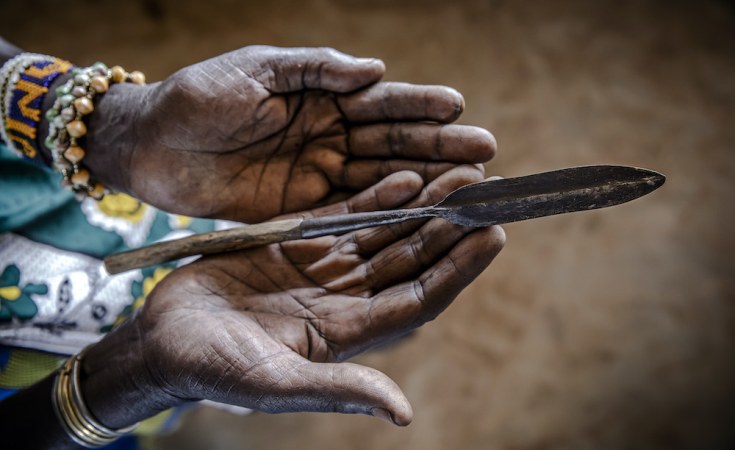The number of female genital mutilation survivors now exceeds 230 million worldwide, with most living in Africa, according to Unicef. That represents an increase of 15 percent since 2016 despite progress against the practice in some countries.
"It is indeed bad news. This is a huge number, a number that is bigger than ever before," said Claudia Coppa, lead author of the report released to coincide with International Women's Day on Friday.
Female genital mutilation, known as FGM, can include partial or total removal of the clitoris as well as the labia minora, and suturing of the vaginal opening to narrow it.
FGM, which can cause fatal bleeding or infections, can also have long-term consequences such as fertility problems, childbirth complications, stillbirth and painful sexual intercourse.
144 million survivors in Africa
Africa is home to the most number of FGM survivors with more than 144 million, ahead of Asia (80 million) and the Middle East (six million), according to the survey of 31 countries where the practice is common.
The overall increase is largely due to population growth in certain countries but the report highlighted progress in reducing its prevalence in other places.
In Sierra Leone, the percentage of girls aged 15 to 19 who have undergone genital mutilation has fallen in 30 years from 95 percent to 61 percent.
Ethiopia and Kenya also recorded strong declines.
Burkina Faso is one of 29 countries most affected by FGM, but the practice has declined thanks to the commitment of the state and the mobilisation of young girls and boys, according to Unicef.
The percentage of girls and women aged between 15 and 49 subject to FGM dropped from 76 percent in 2021 to 56 percent in 2020.
Bilal Sougou, child protection head at Unicef-Burkina said this "significant progress" is linked to "major political commitment from the authorities".
"To date, almost 400 cases of circumcisers or people who have practised circumcision have been brought before the courts," he added.
FGM cases among children aged up to 14, have, however, dropped only from 13 percent in 2010 to nine percent in 2021.
FGM and children
In Somalia, 99 percent of women between 15 and 49 have undergone genital mutilation, as well as 95 percent in Guinea, 90 percent in Djibouti and 89 percent in Mali.
"We're also seeing a worrying trend that more girls are subjected to the practice at younger ages, many before their fifth birthday," Unicef chief Catherine Russell said in a statement.
"That further reduces the window to intervene. We need to strengthen the efforts of ending this harmful practice."
Meanwhile, the UN called Wednesday for the withdrawal of a controversial bill aimed at ending a ban on female genital mutilation in Gambia.
On Monday, Gambia's parliament began examining the bill, in force since 2015, with the second reading of the text now slated for 18 March.
Seventy-six percent of Gambian women aged between 15 and 49 had undergone female genital mutilation, according to a 2021 report by Unicef.
Role of men and boys
Progress needs to increase to 27 times the current level to eradicate the practice by 2030, as called for in the UN's Agenda for Sustainable Development.
But even if perceptions are evolving, FGM "has been in existence for centuries. So changing social norms and practices that are related to this norm takes time," Coppa said.
"In some societies, for example, it is considered a necessary rite of passage, in other contexts it is a way of preserving, for example, the chastity of girls. It's a way of controlling girls' sexuality," she said.
As for the role of men and boys, while in some countries they favor the continuation of FGM, in others women and girls are the ones reluctant to abandon the age-old practice.
But the men and boys "remain silent.... And this silence gives the impression that there is active acceptance of the practice. So everybody needs to take a stand," Coppa said.
(with AFP)


